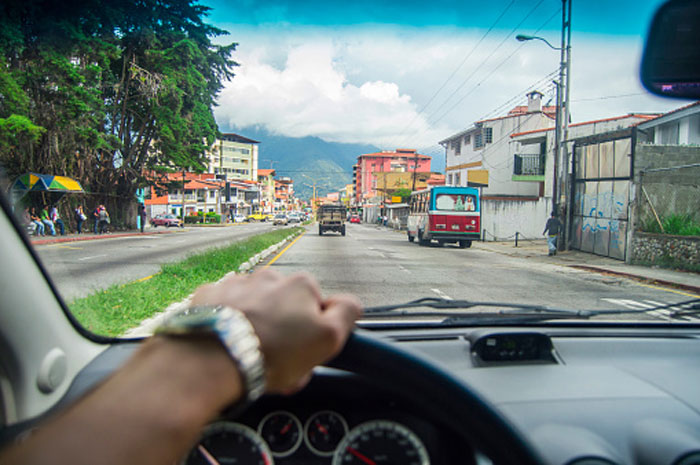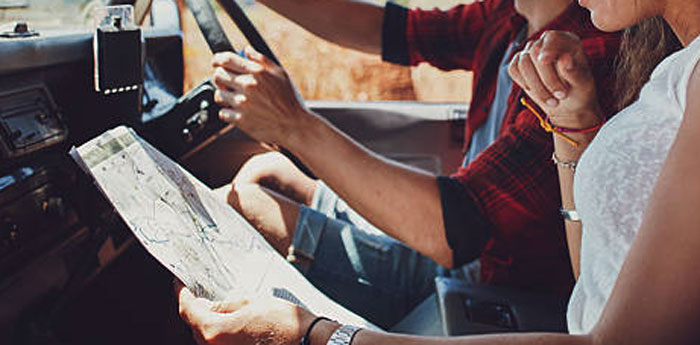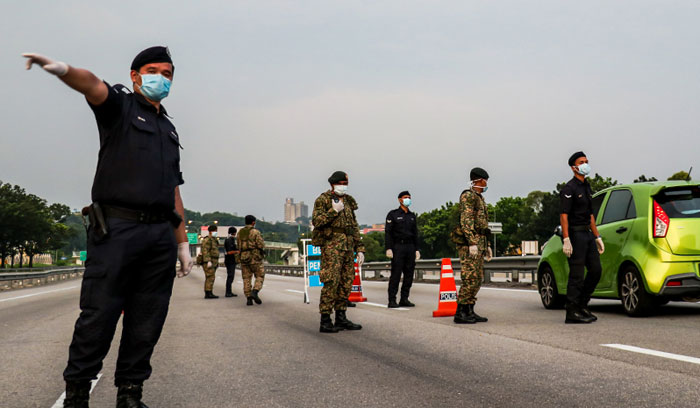We are often asked to provide instruction and/or information on how to drive safely in foreign countries, since when people visit other countries for work or play, they often end up driving in those countries.
Since there are far too many variables to cover them all in a single document, and since there are so many different circumstances particular to certain countries driving rules or habits that could take a whole training program to cover them alone, we have comprised these common sense concepts that will provide a good start to safe driving onto this easy to follow paper.

Rule#1:
Do most, if not all, of your driving during the daylight hours.
This is almost a no-brainer, particularly when you are in a foreign country with different customs, rules, habits, and often a different language or idiomatic use of signage. The fact is that we, as humans, see much better during the daytime than at night, and we can observe the way the traffic is moving, see the problems that range from potholes in the road to armed bad guys looking for trouble, much easier. This gives us much more time to make the critical decisions necessary to avoid trouble on the road when driving than we would have if we incurred the same situation with the limited visibility available at night. Even those who have exceptional night vision still can identify a cow in the middle of the road much farther ahead of them than they can with the best headlights available.
Another great reason to avoid driving at night is that as a general rule, more bad things occur after the sun sets than during the daytime. Nighttime is the friend of most criminals and they prefer to conduct their operations in the dark, when visibility is limited. Certain countries, such as those in Latin America are particularly susceptible to increased criminal activity in the night hours. If you drive during the daytime and make your plans to arrive at your destination before it goes dark, you are far more likely to avoid the criminals looking to further their ends.

Rule#2:
Do your research before you get in the vehicle to drive.
Again, this is a no-brainer, study, read, learn all you can about the rules of the road when you travel to different countries about their rules of the road, traffic laws, (including the penalties for breaking these laws), and customs of the country(s) you are intending to drive in BEFORE you have to drive. Nothing is more frustrating to both the driver and to all those around them than to have someone making poor, wrong, or no decision while driving. Almost every country on the planet has many different rules, signs, traffic patterns, etc. than any other country. Some are similar, but they may be vastly different as well. Figure this out before you go.
Rule#3:
Do not wear flashy clothes or jewelry, or drive expensive vehicles that stand out unless there is no other choice.
The surest way to attract unwanted criminal attention is to look like it would be well worth their time to rob you. Avoid wearing expensive clothing that draws attention, or expensive watches, necklaces, sunglasses, or items that you think might make anyone think you have a lot of money. Whether you do or you do not is immaterial once the criminals stop you and begin their actions. Driving a Cadillac Escalade will attract more unwanted attention than driving a 2014 GMC 2500 pickup. It might be more comfortable to drive in the Caddy, but all that comfort will quickly be forgotten when you are faced with bad guys pointing guns at you and your family. It’s unlikely that you will be able to pass for a local for many reasons, but its far better to be seen as just another tourist or worker bee who’s just trying to make ends meet than one of the rich and famous. The whole idea is to make the criminals who look at you decide to go rob someone else, that you just won’t be worth the effort.

Rule#4:
Get all the paperwork you can completed before you reach the border.
These days, a great many countries allow travelers to obtain visas, importation forms, temporary driver’s permits, customs forms, etc. online, or from their embassies or consulates, prior to the actual travel dates. This can make the difference between a brief visit at the border immigration and customs offices and a 4 hour visit that resembles a chapter of Dante’s Inferno for you. Read information or watch videos regarding what other passengers found helpful or detrimental to their individual entry/exit from particular countries. Try your best to understand the process that must be completed before you arrive at the port of entry. Most countries have both immigration and customs located together, or close by, and you must normally visit both to successfully enter the country. Some countries require you to meet with other regulatory or institutional offices. BTW, Immigration is normally where they allow YOU in, Customs is normally where they allow your baggage, or stuff, in to the country and they are often completely separate operations.

Rule #5:
Understand what is a legitimate traffic stop, and what might be an illegal stop conducted by bad people.
Traffic stops, road blocks, check points, rolling barricades, (“Reten” in Spanish), are a major concern in many countries, especially for foreign travelers or workers. The vast majority of countries conduct road blocks for a variety of reasons, most of them for legitimate law enforcement reasons. Unfortunately, sometimes bad guys use these same type of road blocks to conduct various criminal acts. There are some general guidelines that we recommend to help you determine what might be a bad “reten” from a good traffic stop. We developed these particularly for Latin America, including Mexico, and they provide you with information that might help you avoid driving into a danderous situation.
SBS refers to these as:
The 4 “P”s of Traffic Stops
- Position or physical position of a legitimate stop will normally be marked in advance, be placed where traffic approaching it can see it clearly, (usually on a long straight stretch or road. Illegal stops will often be placed where the drivers have little, or no, advance warning before the are upon the stop. They might be placed around a curve, or over a hill, where you cannot see it until its too late.
- Profile What does the stop look like? Are the police all in the correct uniform? Are they carrying the right kind of firearms? Do the police vehicles have the correct emblems and appearance. If you have done your research before you started driving, then you should know what the local, state and federal police uniforms should be and what kind of vehicle emblems should be on the You may not know firearms, but if there are four guys with guns and they all four have different types of rifles, or one has a handgun he’s pointing at everyone, then it’s a pretty good bet that this is NOT a legitimate traffic stop.
- Passage Is traffic allowed to flow through the stop easily and efficiently? Is there a lane whereby those manning the stop are waving vehicles through? Real lawful road blocks are set up so that there is a minimum of disruption to the traffic, even If they wish to check every vehicle. It the stop looks like a Gordian Knot, and it appears to be poorly planned with no way for traffic to move easily through the stop, then it may not be a legitimate barricade. There may be times when certain situations demand a lengthy stop and search by legal authorities, but if the stop doesn’t have good passage and that appears to be by design, then be careful. Even legitimate stops with concrete K-rails, spike strips, and the like, are usually set up to allow traffic to flow pretty efficiently through the stop.
- Parking Legitimate stops will most often have a place whereby the officers can direct drivers to park their vehicles for additional screening or searches. It is very rare when you will find vehicles being searched, dismantled, and contents being strewn about on the roadway. If this is happening, then the odds are that this is a criminal traffic stop and they are essentially mugging drivers and passengers. They may be only taking money and valuables, (computers, jewelery, cameras, etc.), or they may be looking for potential valuable individuals whom they can kidnap and ransom, (which is the LAST thing anyone wants to experience when vacationing or working in a foreign country…). At the very least, you can be sure that if it is a criminal stop the best you can hope for is to not be noticed.
The Four “P”s can be a useful tool for you to use to determine if you are driving into a batch of trouble.
They are only a guide, and you may find that what you thought might be a criminal group is really just a local deputized group with some authority trying to provide assistance to the regular law enforcement teams, but at least you will have some idea. There are far too many variables to adequately cover all the options which may occur, but this is provides you with a good rule-of-thumb guide.
We recommend if you can determine that the road block may be a bad one, avoid it if at all possible. If you can turn off the road before you get to the stop, do so. If you do, make certain that you know where the road leads that you turn on and that you aren’t jumping out of the frying pan into the fire. Turning into a parking lot, then exiting and going back the other way is a good option. Try to avoid making your decision look suspicious or draw attention to your actions. If you can simply make a U-Turn and reverse directions back the way you came, that might be best.
Avoiding a potentially dangerous situation is always the best course if at all possible. You are in that country to have fun or to work, not to test one’s luck.
For more information, please visit our Custom Training Programs and our Standardized Programs. Or contact us and we will be happy to review your training needs.
